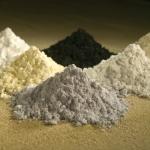Fracking Argentina: Chevron Teams Up With YPF

YPF, the Argentinian state-owned oil company, has signed an agreement with Chevron in the U.S. to extract shale gas and oil using fracking technology in the southern Andes mountains. Local environmental and indigenous activists are gearing up for a fight to stop the controversial technology.
Modern fracking - a nickname for hydraulic fracturing - uses horizontal drilling techniques, to bore mile deep holes into the earth and pump in millions of gallons of water, sand and hazardous chemicals to break up rock formations and extract gas contained inside.
Chevron says it will invest $1.24 billion to help YPF drill 1,500 wells in a 5,000-acre area of a region known as Vaca Muerta located in the Neuquén Province of southern Argentina.
That's just the beginning. "YPF has signed agreements with Dow, the Neuquén-based oil company, [and] with Winter, the German company. And it's negotiating with Exxon, Apache, Total, and others," Diego Di Risio of the Southern Petroleum Observatory, an NGO that tracks petroleum extraction in the country, told the Earth Island Journal. "Chevron and YPF isn't just about one agreement - it's about creating a precedent for the entire sector."
Greenpeace, explains the impact of this extraction: "The fracturing of a single well requires a huge volume of water: around 9,000 - 29,000 cubic meters (9 -29 million litres). Chemicals make up about 2 percent of the fracturing liquid, i.e. about 180,000 - 580,000 litres. Only 15 - 80 percent of the injected fluid is recovered, meaning that the rest remains underground, where it is a source of contamination to water aquifers."
"It's not just the land they are taking," Lautaro Nahuel, of the Mapuche indigenous community in Neuquén, told the Earth Island Journal. "All the natural life in this region is interconnected. Here, they'll affect the Neuquén River, which is the river we drink out of."
Contamination from fracking has shown up in unusual places. For example communities in the U.S. have seen tap water catch on fire in fracking areas. (Watch this YouTube video and this one from Time magazine)
Fracking can also dramatically increase the likelihood of earthquakes, according to recent research in Youngstown, Ohio, where residents were hit on Christmas Eve 2011 and again on New Year's Eve.
The technology faces fierce opposition from a number of European governments. France banned fracking in 2011 and Bulgaria banned fracking last January. Romania has a moratorium on the technology and the Czech republic is also considering a ban.
Environmental groups around the world have been spreading the word about the technology and organizing protests. For example, the village of Balcombe, just south of London, has seen major protests against the technology. Earlier this week, the Royal Canadian Mounted Police broke up a protest and blockade by the Elsipogtog First Nation to stop a shale gas project in Rexton, New Brunswick.
The Mapuche plan to join this growing international movement. "We're ready to defend the river, the earth, and the plants so that we can continue to live and develop ourselves as a people," says Nahuel.
Meanwhile Chevron is at the forefront of exporting fracking technology globally. The Financial Times reports that the company has been aggressively attempting to get concessions in Eastern Europe. "For years, it has been snapping up exploration acreage along a geological faultline that stretches from the Baltic to the Black Sea," writes Guy Chazan. "A crucial piece of its jigsaw fell into place in May when it won the right to negotiate a big shale gas contract in Ukraine. That left it with an almost continuous arc of concessions stretching from Bulgaria in the south-east to Poland in the north. The blocks in Romania alone cover 2,700sq km."
- 183 Environment



